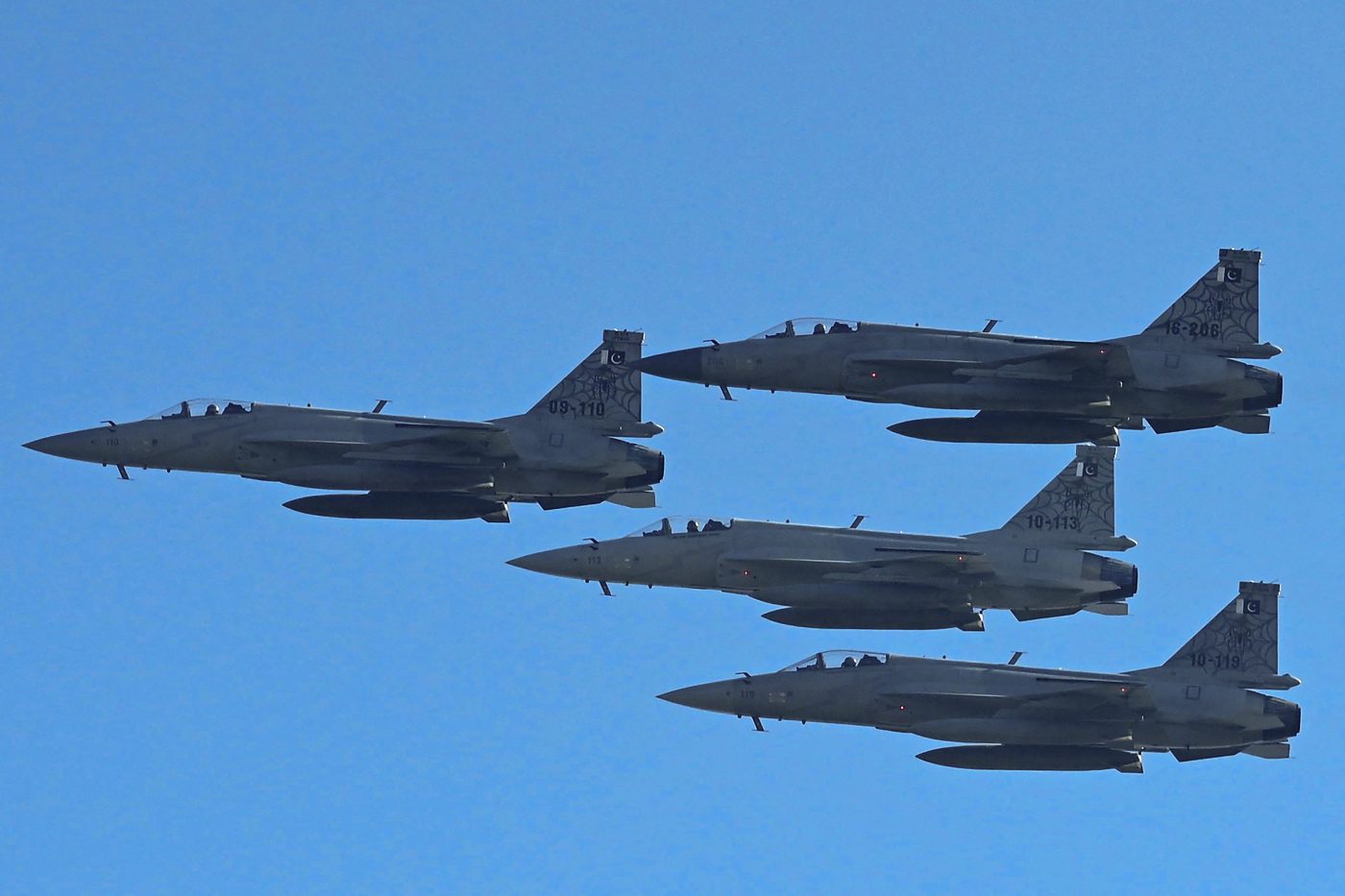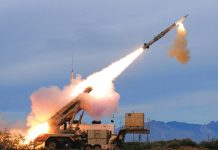In a stunning revelation, India’s Air Force Chief Marshal AP Singh disclosed that the Indian Air Force (IAF) destroyed 9-10 Pakistani fighter jets, including US-supplied F-16s and Chinese JF-17s, during “Operation Sindoor.” This is besides the C-130 and a couple of AEW&C aircraft, which the IAF claimed to have obliterated.
Interestingly, unlike the 2019 Balakot airstrikes—where Washington quickly discredited IAF’s claims of downing a Pakistani F-16 by MiG-21 Bison—the United States has offered no such rebuttal this time.
Instead, its evasive responses have fueled speculation of a subtle acknowledgment of Pakistan Air Force’s losses.
Operation Sindoor, launched on May 7, 2025, was India’s swift retaliation to the Pahalgam terror attack on April 22, which claimed 26 lives.
Indian military targeted nine terror camps across Pakistan and Pakistan-occupied Kashmir, inflicting what the IAF now describes as “decisive” damage to Pakistan’s air infrastructure.
Speaking at his annual press conference on October 3, Air Chief Marshal Singh said that the IAF destroyed 12 to 13 Pakistani aircraft, including 9-10 fighter jets. Among these were four to five high-tech fighters—US-made F-16s and Chinese co-produced JF-17s—with an additional four to five F-16s destroyed in the hangar, likely under maintenance.
The IAF also asserted a “long-range kill” on a Pakistani Airborne Early Warning and Control (AEW&C) or an intelligence aircraft, alongside strikes on four radar stations, two command-and-control centers, two runways, and three hangars—potentially housing C-130 aircraft.
The S-400 AD System, acquired from Russia in 2021, reportedly played a pivotal role, proving “highly effective” in shooting down Pakistan’s Chinese and American-supplied fighter jets and AEW&C Aircraft.
Pakistan, for its part, has vehemently denied the figures, asserting it downed “multiple” Indian jets and inflicted heavy casualties. Islamabad’s Prime Minister Shehbaz Sharif recently reiterated these claims at the UN General Assembly, prompting Singh’s retort: “The world saw we achieved our goal—Pakistan demanded the ceasefire.”
The 2019 Balakot crisis offers a poignant parallel—and a glaring divergence. Following India’s precision strikes on a Jaish-e-Mohammed terror camp, a subsequent dogfight saw Wing Commander Abhinandan Varthaman’s MiG-21 Bison downed, but India claimed an F-16 kill based on radar data and a missing Pakistani jet.
The US, a key supplier of F-16s to Pakistan under strict end-use agreements, conducted an inventory audit and flatly rejected the claim: “We have no indication that Pakistan lost an F-16.”
Fast-forward to Operation Sindoor: When pressed in August 2025 on reports of F-16 losses, the US State Department demurred. Spokesperson Matthew Miller said, “We refer you to the Government of Pakistan to discuss its F-16s,” a stark contrast from the 2019 statement.
In a subsequent briefing on August 12, the department urged “direct communication” between India and Pakistan but avoided specifics on hardware.
Analysts interpret this reticence as a “subtle admission.” “By not auditing or denying, the US is signaling it knows losses occurred—and perhaps tacitly accepts India’s right to self-defense,” said retired Lt. Gen. KJS Dhillon in an NDTV panel.
The loss of ‘aging’ F-16 fighters would be a hard pill to digest for PAF, but losing scores of ‘cutting-edge’ JF-17 Thunders could be a big blow to Pakistan, China, and its export ambitions.

JF-17 Thunder or Blunder?
Pakistan constitutes approximately 63% of China’s arms exports, according to data from SIPRI. During recent clashes, Pakistan deployed J-10C Vigorous Dragon and JF-17 Thunder, equipped with PL-15 air-to-air missiles.
Pakistan’s air defenses also relied on Chinese equipment, including the HQ-9P long-range surface-to-air missile system, alongside Chinese radar, armed drones, and reconnaissance drones.
“This was the first extended conflict where Pakistan’s forces predominantly used Chinese weaponry, treating it as their primary choice,” said Bilal Khan, founder of Toronto-based Quwa Defence News & Analysis Group.
Pakistan’s Chinese air-defense systems, however, “seem to have underperformed compared to the Pakistan Air Force’s expectations,” acknowledged Khan, following India’s claim of neutralizing one near Lahore in the east.
Not only HQ-9P, but JF-17 Thunder was also a big disappointment!
Co-developed by Pakistan Aeronautical Complex (PAC) and China’s Chengdu Aircraft Corporation (CAC), the JF-17 Thunder was designed as a budget-friendly, yet powerful, multirole aircraft.
At $25-50 million per unit (Block III variant), it’s pitched as a cost-effective alternative to Western jets, such as the F-16 or Gripen, boasting AESA radar, beyond-visual-range missiles, and a top speed of Mach 1.6.
During Operation Sindoor, conducted by the Indian military, it appears that the JF-17s, rather than the combat-proven F-16s, have emerged as the biggest losers, despite both jets being on the receiving end of IAF strikes.
Firstly, it appears clear that most, if not all, of the F-16’s losses were on the ground, while JF-17s were shot down by S-400 in the thick of action.
Critics might decry this as a “sneak attack” that neutered Pakistan’s Fighting Falcons while they were in maintenance; the silver lining for the F-16 program is stark: these jets, averaging 25-30 years old, were already nearing obsolescence.
The US has flooded global markets with surplus F-16s, and Pakistan’s losses merely accelerate a retirement timeline that was inevitable.
Contrast this with the JF-17’s fate: no such grace period. Its losses demand a deeper autopsy.
Every JF-17 that fell from the skies was annihilated in active combat by India’s S-400. If the F-16’s downfall was passive—sitting ducks in their hangars—the JF-17’s was a spectacle of aerial humiliation.
The JF-17’s composite airframe and fly-by-wire controls were unable to outdo the S-400’s interceptors, which tracked and neutralized them. For a jet designed to punch above its weight in export markets, the downfall of the Chinese-Pakistani JF-17s spells doom for its global sales.
Countries like Argentina (which opted for second-hand F-16s) and Malaysia (which opted for Korean FA-50) would be breathing a sigh of relief for not blundering with the Thunder. For Myanmar and even Nigeria, the current operators of JF-17s, the reported downfall of the Sino-Pak JF-17s would validate their issues/concerns with the Chinese-Pak aircraft.
The F-16 enters this equation as the grizzled survivor: a 1970s design that’s flown more sorties than any other fighter in history, from Desert Storm to Syrian patrols. Even in Ukraine, the F-16 Fighting Falcons have suffered 3-4 losses, some of which were at the hands of the S-400.
The aging jets did not really stand a chance against the S-400 or Russia’s cutting-edge jets, such as the Su-35.
The JF-17 Thunder, however, was Pakistan’s moonshot: a “brand new” fourth-generation lightweight fighter, co-developed with China’s Chengdu Aircraft Corporation.
With over 150 units delivered to the PAF and ambitions to export 300 more by 2030—at a bargain price of $25-30 million per copy—it was positioned as an ideal platform for budget-conscious buyers like Azerbaijan and Bangladesh.
Islamabad’s sales pitch leaned hard on its modern AESA radar, helmet-mounted display, and integration with Chinese munitions, framing it as a “Thunder” ready to rumble against rivals.
The reported shootdowns of JF-17s during Operation Sindoor punctured Pakistan’s narrative as a formidable alternative to Western fighter jets.
If India’s claims are true, the losses could dent the JF-17’s export prospects, which are already competing in a crowded market where nations like Argentina and Malaysia have favored alternatives, such as the F-16 and FA-50.
The older, nearing-retirement, and destroyed in hangars, the F-16s, have nothing much to lose compared to the “cutting-edge”, brand-new JF-17 Thunders.
However, Pakistan’s Air Force can draw some solace: facing India’s S-400, one of the world’s most advanced air defense systems, was a formidable test. For now, the JF-17’s future hinges on whether Pakistan and China can address these setbacks and restore confidence in its capabilities.
- This is an Opinion Article




